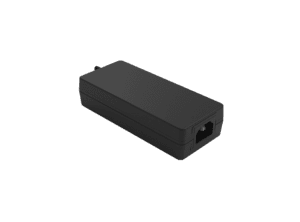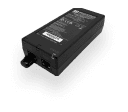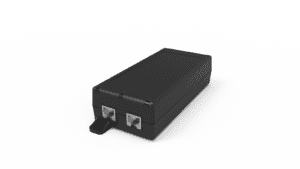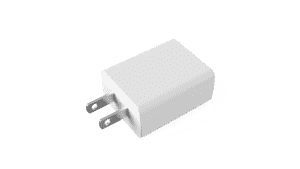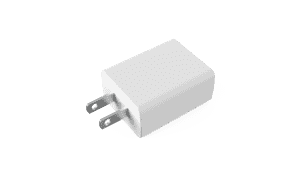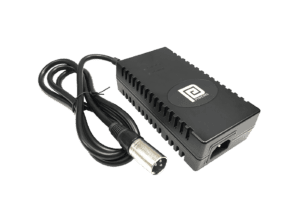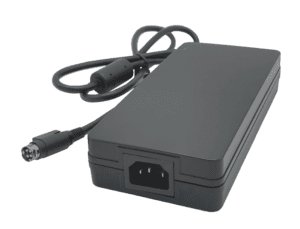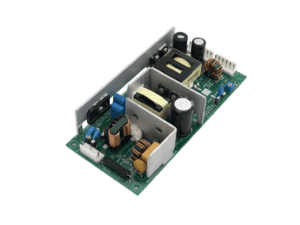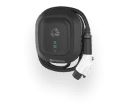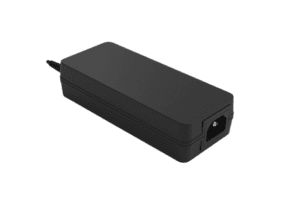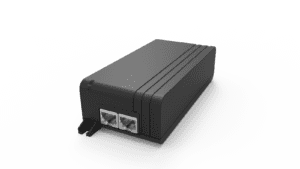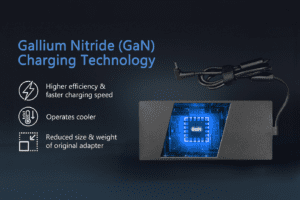BLOG
AC DC Power Chargers and How They Work: A Comprehensive Technical Breakdown
Table of contents

AC DC power chargers are vital in the world of modern electronics, transforming AC power into safe, usable DC electricity that allows you to charge your devices effortlessly. But what exactly happens inside these seemingly simple devices? In this article, we’ll delve into the inner workings of various types of adapters, examining their components and the challenges they tackle in both power and data systems.
Types of AC DC Power Chargers.
Power Adapters
AC DC power chargers are primarily designed to convert and regulate electrical power. They’re most commonly used to step down high-voltage AC power to lower-voltage DC power that’s suitable for sensitive electronic devices. In applications such as laptop chargers or mobile phone power supplies, power adapters serve as the intermediary between the grid’s power and the device’s specific voltage requirements.
Internally, power adapters contain several critical components, such as transformers, rectifiers, and voltage regulators, each of which serves a vital role in ensuring efficient and safe power delivery. Many power adapters now also incorporate energy-efficient designs to minimize power loss during conversion and meet international efficiency standards.
In more advanced applications, power adapters also regulate output based on the device’s demand. For instance, modern power adapters for laptops can dynamically adjust their output based on the device’s power consumption, ensuring more efficient power use.
Hybrid Adapters
Hybrid adapters combine both power and data functionalities. A common example is Power over Ethernet (PoE) adapters, which transmit both power and data over a single Ethernet cable. PoE is widely used in networked devices such as IP cameras and access points, where delivering both power and data through a single cable simplifies installation and reduces cost.
These types of AC DC power chargers contain components that separate power and data signals at the destination device, ensuring that power is routed to the device’s power input while data is sent to its communication module. Hybrid adapters, such as PoE injectors, are particularly advantageous in settings where reducing cable clutter is critical, such as in industrial or smart-building applications.
Core Components of AC DC Power Chargers
Regardless of their specific function, most adapters share several key components that enable their functionality. Understanding these components is essential for engineers looking to design or select the right adapter for their application.
Transformers
Transformers are a fundamental part of AC DC power chargers. They work on the principle of electromagnetic induction, converting electrical energy from one voltage level to another. This is particularly important in power adapters that need to step down high AC voltages (such as 120V or 240V from a wall outlet) to much lower voltages that electronic devices can safely use (typically 5V, 12V, or 19V DC).
In most cases, transformers in power adapters are either step-up or step-down types, depending on whether the output voltage needs to be higher or lower than the input voltage. The transformer’s efficiency and size are dictated by the operating frequency and the amount of power being transferred. High-frequency transformers are more compact and efficient but require advanced switching circuitry, often found in modern switching power supplies.
Rectifiers and Regulators
Rectifiers are used to convert AC power to DC power. In power adapters, this is a crucial step, as most electronic devices operate on direct current (DC). The rectifier converts the AC input into pulsating DC, and then capacitors smooth out the signal to produce a steady DC voltage.
Voltage regulators are another critical component. Their job is to maintain a consistent output voltage despite fluctuations in the input voltage or variations in the load. Without proper regulation, devices could experience brownouts or surges, leading to malfunction or damage. There are two main types of voltage regulators:
- Linear Regulators: These are simpler but less efficient, as they work by dissipating excess voltage as heat. They are often used in low-power adapters.
- Switching Regulators: These are more complex but highly efficient, converting voltage through high-frequency switching and often used in modern adapters where efficiency and thermal management are crucial.
Connectors and Interfaces
Connectors are the physical interface between the AC DC power chargers and the device it serves. The connector type depends on the function of the adapter—whether it’s delivering power, transmitting data, or both.
In power adapters, connectors are often barrel jacks or USB-type connections, designed to fit the power port of the target device. For data adapters, connectors can range from USB, HDMI, DisplayPort, and Ethernet to more specialized industrial connectors like DB9 for serial communication.
In hybrid adapters, connectors need to be capable of handling both power and data transmission, as seen in Ethernet ports used for PoE applications.
Power Conversion and Regulation in Adapters
The internal workings of power adapters are focused on efficiently converting and regulating power. These processes ensure that the output is both usable and safe for the connected device.
AC to DC Conversion
Most power adapters are designed to convert alternating current (AC) from the mains supply into direct current (DC), which is the form of electricity most electronic devices use. The conversion process involves a rectifier, typically using diodes that allow current to flow only in one direction. The result is pulsating DC, which is then smoothed using capacitors to provide a cleaner and more stable DC output.
AC to DC conversion is one of the most energy-intensive processes in an adapter, and any inefficiencies in this stage lead to heat generation and power loss. Modern adapters often include switching power supplies to minimize these losses and achieve higher efficiency.
Voltage Regulation
Voltage regulation is necessary to maintain a steady and accurate output voltage. In many adapters, the input voltage from the mains supply can fluctuate, especially in regions where grid power is inconsistent. Without proper regulation, these fluctuations could be passed on to the connected device, causing it to malfunction or even get damaged.
Adapters use voltage regulators, which are typically either linear or switching types. Linear regulators are simpler but less efficient, as they dissipate excess voltage as heat. Switching regulators, on the other hand, work by rapidly switching on and off, adjusting the power flow to maintain a consistent output without generating as much heat.
Data Transmission in Adapters
While AC DC power chargers are focused on converting and regulating electrical energy, data adapters have the critical role of enabling communication between devices with different data standards or protocols. Ensuring signal integrity and compatibility is key to their functionality.
Protocol Compatibility
For any data adapter to function correctly, it needs to ensure compatibility between the devices it connects. This involves more than just physical connector matching; it requires that the adapter translates or transcodes signals between different protocols. For example, an HDMI-to-VGA adapter must convert the digital HDMI signal into an analog VGA signal while maintaining the integrity of the video output.
Different data standards operate on specific electrical levels and signaling methods. A USB-to-Ethernet adapter must handle not only the physical connection difference but also the translation of USB signaling into Ethernet protocols, allowing seamless data transmission across the two interfaces.
Signal Integrity and Noise Mitigation
Maintaining signal integrity during data transmission is crucial, especially for high-speed communications. In adapters, improper signal handling can lead to data loss, corruption, or reduced transfer rates. Techniques like differential signaling, used in HDMI and USB, help reduce noise and electromagnetic interference (EMI).
High-speed data adapters often incorporate shielding and grounding to prevent external noise from corrupting the signals. In some cases, adapters must also manage issues like crosstalk, where signals from nearby cables or circuits interfere with each other.
Power Conversion and Regulation in Adapters
AC to DC Conversion
Most consumer electronics use DC power, while the power grid supplies AC power. Power adapters are equipped with transformers, rectifiers, and voltage regulators to convert and stabilize AC to DC for devices like laptops, phones, and gaming consoles.
Voltage Regulation
Voltage regulation is critical to ensure that the device receives a consistent and correct voltage, protecting it from spikes or dips that can cause damage. Linear regulators and switch-mode power supplies (SMPS) are two common methods of achieving voltage stability.
- Linear Regulators: Simple but less efficient, these are ideal for low-power applications.
- Switch-Mode Power Supplies (SMPS): More complex but highly efficient, SMPS adapters adjust the output voltage by rapidly switching the current on and off and filtering the results.
Data Transmission in AC DC Power Chargers
AC DC power chargers also play a significant role in data transmission, particularly when connecting devices with different communication protocols.
Signal Conversion
Data adapters translate between different communication standards, ensuring data is transmitted in a readable format for both devices. For example, a DisplayPort-to-HDMI adapter must convert the DisplayPort signal into one compatible with HDMI standards.
Data Integrity and Signal Quality
Maintaining data integrity is essential during transmission. Adapters must ensure that signal quality is preserved, especially for high-definition video or high-speed data transfers. Signal degradation can occur over longer cable distances, making quality components critical for maintaining transmission speeds and reducing interference.
Protocol Translation
Adapters often include chips that handle protocol translation, such as USB-to-Ethernet adapters, which convert between two very different communication standards. These adapters must ensure that data is properly encapsulated and decoded as it moves between protocols.
Specialized Adapters
As technology evolves, adapters are becoming more specialized, catering to specific applications in power and data transmission.
PoE Adapters
Power over Ethernet (PoE) adapters are a prime example of specialized adapters designed to deliver both power and data over a single Ethernet cable. This is particularly useful in networking environments where devices like IP cameras, wireless access points, and VoIP phones need power but are located far from conventional power outlets.
PoE adapters, also known as injectors, integrate power into the Ethernet cable, ensuring that devices receive both power and data without requiring separate cables for each. This is achieved through specialized circuitry that injects power into the Ethernet cable, separating it again at the receiving end.
USB-C Adapters
USB-C has become a universal standard for both power and data transmission. USB-C adapters are designed to handle multiple types of connections, from HDMI to Ethernet, while also delivering up to 100W of power for devices like laptops and monitors.
USB-C adapters are equipped with advanced power delivery (PD) technology, which allows them to dynamically adjust the power output based on the connected device’s needs. They also support high-speed data transfer protocols, making them versatile tools for both power and data applications.
How to Choose the Right Adapter for Your Application
Selecting the right AC DC power chargers requires careful consideration of the specific requirements of the device and application.
Power Requirements
For power adapters, the output voltage and current ratings must match the requirements of the connected device. Overpowering a device can damage its internal components, while underpowering it can lead to unstable performance or even prevent it from turning on. It’s also important to consider the efficiency rating of the adapter, especially for devices that will be used continuously, as this affects both power consumption and heat generation.
Durability and Environmental Factors
If the adapter will be used in an industrial or outdoor environment, it’s essential to select one that is ruggedized and capable of withstanding harsh conditions. Look for adapters that offer environmental ratings such as IP67 for water and dust resistance or those designed for extended temperature ranges.
Future Trends in Adapter Technology
As technology continues to advance, adapters are evolving to meet new demands for power and data transmission. Several trends are shaping the future of adapter design, making them more intelligent, efficient, and versatile.
Wireless Power Adapters
Wireless charging is becoming increasingly popular, and the development of wireless power adapters could eliminate the need for physical cables entirely. Using technologies like Qi or resonant wireless power, future adapters may transmit power through the air, reducing wear and tear on connectors and enabling more flexible charging options.
Intelligent and Smart Adapters
Smart adapters equipped with microcontrollers and sensors can dynamically adjust power output based on the connected device’s needs. These intelligent adapters can also monitor temperature, voltage, and current, providing real-time feedback to ensure safe and efficient operation. Some smart adapters may also integrate with mobile apps, allowing users to monitor power consumption and control settings remotely.
CLIENT'S QUOTE
Phihong's Power-Over-Ethernet solutions have transformed our network, boosting efficiency and reducing costs. Their seamless integration has simplified both installation and maintenance.
Explore More with Phihong USA
As we conclude our exploration of adapters, it’s clear that this field is experiencing unprecedented growth. For over 50 years, Phihong has been at the forefront of innovation, serving Fortune 500 companies across various industries as a leading power supply manufacturer for OEMs.
In addition to custom power supply solutions, Phihong offers a diverse range of products, including:
- Power over Ethernet (PoE) Solutions: PoE injectors, splitters, media converters, and more
- AC/DC Adapters and Power Supplies: USB adapters, desktop adapters, industrial-grade power supplies, and more
- Battery Chargers: Chargers for lithium-ion and lead-acid batteries
- Medical Power Supplies: Specialized power supplies that meet stringent healthcare requirements
By partnering with Phihong USA, you are choosing a trailblazer in power technology. If you’re an OEM looking for a custom PoE solution or just looking for a quality product, call us today: 510-445-0100 or email us at usasales@phihongusa.com. We look forward to collaborating with you.


Contact Our Team Today!
Our dedicated sales team and international partners are prepared to support you with your latest projects and initiatives globally.
FAQ
Can AC DC power chargers be used in outdoor or industrial settings?
Yes, many AC DC power chargers are designed for outdoor or industrial use, but it’s important to choose one with the right specifications. For outdoor settings, look for chargers with a high Ingress Protection (IP) rating, such as IP67, which offers protection against dust and temporary water immersion. In industrial environments, chargers often feature enhanced casings, better thermal management, and protection against electrical noise. They are also capable of operating in extreme temperatures and may carry certifications like CE, UL, or FCC, ensuring they meet safety standards for demanding applications.
What is the difference between a linear regulator and a switching regulator in power adapters?
Linear regulators and switching regulators stabilize voltage in different ways. Linear regulators reduce excess voltage by dissipating it as heat, making them simple and inexpensive but inefficient, especially when the input voltage is significantly higher than the output. This inefficiency limits their use to low-power applications. Switching regulators, in contrast, convert voltage using high-frequency switching, making them much more efficient with minimal heat generation. Though more complex and costly, switching regulators are ideal for high-power devices like laptops or industrial equipment, where energy efficiency and heat management are crucial.

